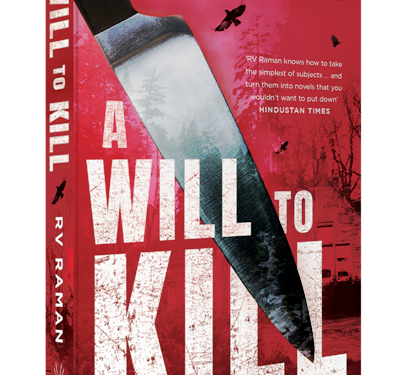Bhubaneswar: “Each person is an enigma. You’re a puzzle not only to yourself but also to everyone else, and the great mystery of our time is how we penetrate this puzzle.”—Theodore Zeldin
The words of Zeldin reverberate in one’s mind while reading RV Raman’s latest murder mystery, ‘A Will to Kill’. The author’s first whodunnit after four corporate thrillers, the murder mystery is set in a colonial mansion snuggled away in the Nilgiris near Ooty.
The author builds up the ambience from the beginning which helps readers transport to a world tinged with suspense.
Bhaskar Fernandez is a man with a chequered past. A wheelchair-bound ageing man who manages to reclaim his family property after a bitter legal battle, Fernandez invites his relatives to his remote Greybrooke Manor in the misty Nilgiris.
The mansion has played host to several sudden deaths; a colonial edifice that stands alone in a valley that is said to be haunted by the ghost of an Englishman.
But Bhaskar has more practical problems to deal with. He knows that his guests expect to gain by his death. To safeguard himself against violence, he writes two conflicting wills. Which one of them comes into force, depends on how he dies. As if it were not enough, he invites Harith Athreya, an investigator, to his mansion and asks him to investigate if he is murdered. During his visit, the house is cut off from the outer world due to a landslide and a murder indeed takes place. Thus begins a mystery that is both gripping and intriguing.
The character of Harith Athreya seems to be a tribute to Agatha Christie’s Hercule Poirot. A sharp man with ample imagination, Athreya’s mannerisms (his fingers “acquire a mind of their own”) and his methods to solve the crime show heavy influence by Agatha Christie’s characters.
The plot is tight and the solution is a surprise. I must make a special mention of the ambience which adds to the mystery at hand. The colonial hangover is evident as is the influence of 19th century England (the mansion is also ‘haunted’ by the spirit of an Englishman). Red herrings galore, there is never a dull moment in the book. The writing is crisp and self-assured and the author’s confidence shows in the way the story unfolds and in the way the motives and secrets of characters are revealed. The cliffhanger chapter-ends and solutions have readers slapping their foreheads. The denouement is crisp and impactful and doesn’t draw out over pages.
Raman’s output possesses the graceful reliability of crafted clockwork. His writing is exotic, gruesome and steeped in gothic imagery, yet filled with a sense of traditional Golden Age mysteries we all love.
The influence of Agatha Christie and John Dickson Carr on the narrative is compelling. While reading the book, one is easily reminded of Christie’s “Three Blind Mice” and Carr’s “The Case of the Constant Suicides”. The narrative style also shows influences of author Ngaio Marsh. Like Marsh, Raman’s prose is what really makes him stand out. It is subtle, clear, ironic, but always elegant and peppered with witty liners; his characters sharply, sometimes hilariously, drawn.
The different yet traditional plot elements combine beautifully to conjure up a great mystery. Like novels of yore, it also follows the rules of the Golden Age Mysteries.
Raman’s transition from thrillers to mysteries seems seamless and his endeavour to write a traditional murder mystery definitely seems to tick the right boxes and emerges as traditional knotty murder mystery of yore set in contemporary India which makes for an excellent read.







































